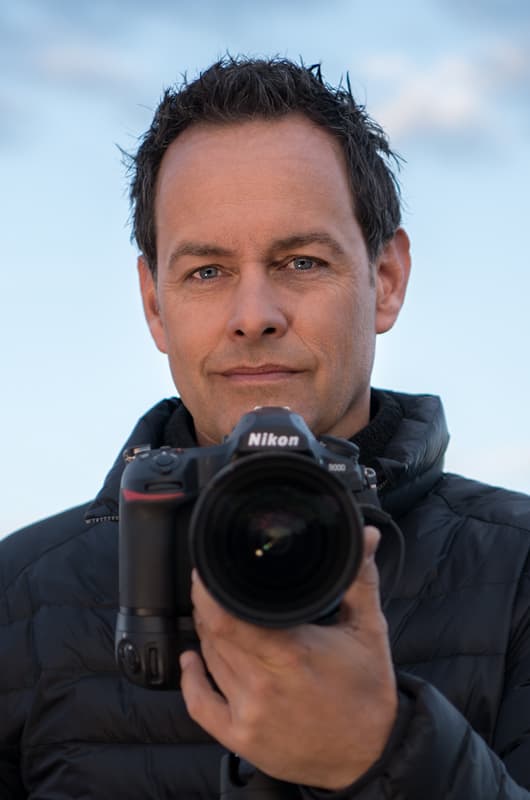Award-winning nature photographer Marsel van Oosten tackles the difficulties caused by ‘beauty paralysis’
Marsel van Oosten

Marsel van Oosten was born in The Netherlands and worked as an art director for 15 years. He switched careers to become a photographer and has since won Wildlife Photographer of the Year and Travel Photographer of the Year. He’s a regular contributor to National Geographic and runs nature photography tours around the world. Visit www.squiver.com. In his latest column, Marsel explains how to avoid and deal with beauty paralysis on location.
Creativity is all about inspiration. When you’re inspired, ideas seem to come naturally. But when you’re not, you are looking but you’re not seeing. Without inspiration, it’s not very likely that you will create something original. Inspiration is the ‘holy grail’ for artists because it is so valuable and yet so elusive. We all want it, but nobody really knows how to get to that elevated state of mind that makes you feel like Leonardo Da Vinci on cocaine.
This isn’t a problem if you’re just doing something creative for yourself – there is always tomorrow – but it can be really frustrating if you’re on an assignment, have little time, or have a once-in-a-lifetime opportunity. When I was still working as an art director in advertising, I spent many days staring at a blank piece of paper, waiting for divine inspiration to arrive.
Those are stressful moments when there is a deadline involved and you’re supposed to come up with a brilliant campaign idea that will win a multi-million-dollar account. I’m happy that I don’t feel that kind of pressure any more in my work as a photographer, but every now and then I experience something similar.
I call it ‘beauty paralysis’. Beauty paralysis is the state of mind you’re in when you’re so overwhelmed by the stunning beauty of the location you’re in, that you can no longer think straight. It’s sensory overload. The stressful part is that you immediately realise that this location has ‘next level’ photography potential.
Except… you don’t have any inspiration. Everywhere you look it is equally amazing, yet you have no clue where to start or what to do. It is that blank piece of paper all over again.
My most intense case of beauty paralysis was in the Atchafalaya Basin in Louisiana, USA. I really wanted to photograph the cypress swamps before a plague of ‘selfie tourists’ would turn it into the next overcrowded social media hype, and experience the serenity and magic in its purest form. My wife Daniella and I rented some kayaks and the adventure began.
It was even more beautiful than I’d imagined – the wilderness experience was so profound that my frontal cortex stopped functioning instantly. Wherever I looked the ridiculously stunning scenery artistically paralysed me. The fact that I was floating around in a kayak – the best feeling ever – made the creative brain freeze even worse.
In the beginning I just got so stressed because if you’re a photographer you instantly recognise that ‘Oh, my God, this is so beautiful and there’s so much potential here to shoot great stuff.’ At the same time you realise that there are no ideas coming and that you’re struggling to actually see a proper photograph.
I no longer get stressed and frustrated – I know it just takes time. You just have to try to relax, look at everything, analyse and try to get to the bottom of why you find it so difficult and what is it that intimidates you the most. For me to come out of beauty paralysis is simply a matter of time.
It took me two full days of paddling to get used to the scenery, to understand it, and to slowly start seeing compositions that were beyond the obvious. In this case it was the ‘clutter’ I struggled with. In my photography I like things to be hyper-clean, without clutter, but forests and jungles are a whole bunch of clutter, so I’ve tried to stay away from them for the most part of my career.
To my eyes, the scene looked beautiful but, when I had to translate it into a photograph, I was struggling because I saw so many distractions. Trying to separate shapes and trying to make backgrounds look acceptable was really hard. After a while I tried to just embrace the clutter and ignore all the tiny details that I usually get totally freaked out about… and that worked. As frustrating as beauty paralysis may be, in the end I associate it only with the most stunning places I’ve ever visited.
As told to Steve Fairclough

Marsel van Oosten shooting from in the water of the cypress swamps, Atchafalaya Basin, Louisiana, USA
Further reading
Marsel van Oosten: why colour can be a distraction in wildlife photography
Marsel van Oosten: how to add context to your wildlife subjects











